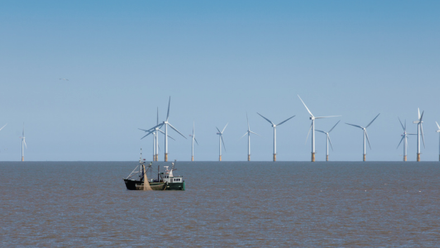The role of funding in protecting marine life
The funding sources helping to maintain – and improve – marine ecosystems.
As a means of protecting marine life and helping to not only maintain, but improve marine ecosystems, financial investments are being made around the globe.
The decision to invest money into marine environments stems from a desire to help preserve and take care of these valuable areas. A recent instance of this is the award of £250,000 from the National Lottery Heritage Fund to Cumbria Wildlife Trust. The money will be used to protect the marine life of Allonby Bay, a HPMA (Highly Protected Marine Area, as designated two years ago).
Described as “in a pretty good state” by Joe Harper, Engagement Officer, Allonby Bay is “home to weird and wonderful life like sea squirts, anemones, reef-building honeycomb worms, cuttlefish plaice, skate and thornback rays”.
A reason for the investment is to engage younger people and raise their awareness of the area's importance. Part of the initiative is for the Trust to work with Cumberland Coastal School in organising events for children to educate them about the HPMA and the coast.
Helping our oceans
In September 2025, the Minderoo Foundation announced that it would be investing €5 million into the ReOcean Fund, a global investment initiative that concentrates on finding solutions to help maintain oceans and to “build a sustainable blue economy”.
The ReOcean Fund is dedicated to tackling problems facing today's oceans, such as pollution, sustainable seafood production, and restoring marine ecosystems, as well as producing transparent data about the oceans.
Commenting on the state of today's marine life, Dr Andrew Forrest, former CEO of Fortescue Metals Group, said that the oceans are “facing unprecedented threats”, with “bold, science-led innovation” a solution to “reverse the damage”.
Blue Planet Fund in the UK
Meanwhile, the UK government's £500 million Blue Planet Fund (BPF) is aimed at helping to protect the marine environment in developing countries.
This year's initiatives include the launch of a BPF Country Plan for Indonesia, which will support the delivery of the Government of Indonesia's Ocean and Blue Economy priorities and objectives.
Up to £18 million will be invested in funding for the next five years as a means of helping to improve vulnerable Indonesian coastal communities while also helping to protect, restore and sustainably manage the country's coastal habitats.
Decline in coral reefs
In a report by BNP Paribas, Nicolas Pascal, Executive Director of Blue Alliance Marine Protected Areas explained that there are 18,000 Marine Protected Areas (MPAs) listed around the world. He added that 70% of these are either “inoperative or severely underfunded”.
Pascal cited the concerns raised over coral reefs in findings made by the IPBES (Intergovernmental Science-Policy Platform on Biodiversity and Ecosystem Services). The decline in coral reefs was attributed to climate change, pollution and overfishing.
With that in mind, Pascal explained that Blue Alliance and BNP Paribas teamed up to create the Blue Finance Facility, an impact debt facility that offers long-term finance to local community businesses as a means of not only helping to preserve coral reefs, but to help with financing MPA operations and to boost the incomes of vulnerable communities.
He explained that the financing covers “responsible ecotourism, community-based aquaculture, sustainable fishing” and the “the restoration of mangroves to capture CO2”.
Tell us what you think about this article by joining the discussion on IMarEST Connect.
Image: close-up of sea squirts. Credit: Shutterstock.






